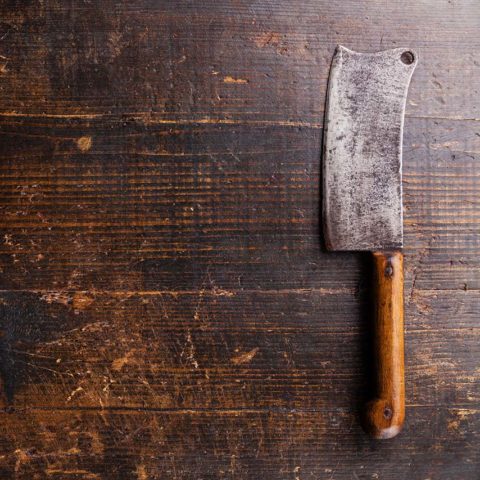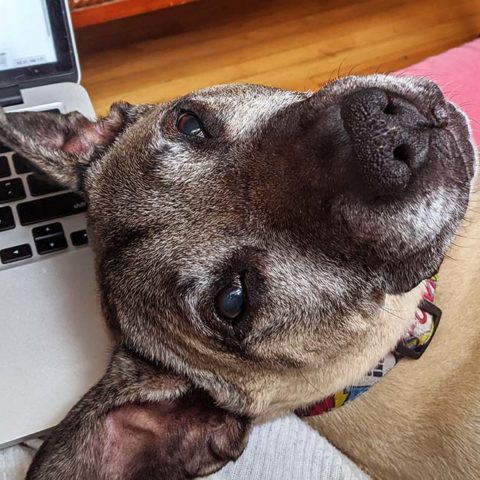April 17, 2020
Bread Baking 101 – Avoiding the Nasty Bits
Not interested in what I have to say? I'll try not to take it personally.
Everyone has experienced the nasty bits of bread baking at one time or another. They’re those bits that sneak up and surprise you when you’ve followed the recipe exactly and you feel like you’ve done everything right, but for some reason, your bread looks like SpongeBob SquarePants. Queue sad trumpet sound.
This is the most daunting part of bread baking because it can be a little bit like black magic. You mix a few simple ingredients together, they come to life like broomsticks in a Walt Disney film, and and a couple hours later, you have bread.
Along the way, there are a lot of things that can go wrong – even for a seasoned bread baker. But if you take the time to learn about the variables that lead to a successful loaf of bread, it’s much easier to avoid the sad SpongeBob loaf.
Below is a partial list of some of the things that can go wrong and what you can do to prevent them:
The water added to your dough is too hot
When you add water to your yeast in the beginning, it should be warm, but not scalding. Remember, that yeast is actually a living organism, so boiling water will kill it. A good rule of thumb – use your thumb! If you put a finger in the water and it’s uncomfortably hot to the touch, it’s probably too hot for the yeast as well. Yeast will perform just fine (albeit a little slower) with cold water if you want to play it safe.
You add too much/too little salt
Salt is one of those ingredients that you shouldn’t futz with in a bread recipe – use the amount that’s called for! Salt works to control the growth of the yeast. Too much and the yeast won’t be able to do its job. Too little and the yeast will be too active, potentially causing it to over-rise before you get it into the oven.
You don’t mix/knead the dough enough
Mixing the dough builds gluten and gluten ensures that our bread has structure and chewiness. A lack of gluten will lead to bread that falls apart or rises unevenly – not a happy ending for your delicious sandwich.
You add too much flour while you’re kneading
If you’re kneading your dough by hand, it’s easy to incorporate too much flour in an effort to prevent the dough from sticking to you and to your counter. I like to leave a cup of flour out of the recipe and use that to incorporate while I’m kneading. Try adding a tablespoon at a time. If you’re still worried about using too much flour, you can also let your dough rest for 20 minutes before kneading some more. This act of doing nothing (called autolyse) will actually allow the flour to absorb some of the moisture, build more gluten and make it easier to work with. I love it when doing nothing does something!
You don’t let your dough rise long enough/you let your dough rise too long
For the love of God, can this dough get any finickier??? The amount of time for your final rise prior to baking is a balancing act. Too much time, and your loaf could “fall” in the oven. Not enough, and it could end up dense, heavy and even a little doughy. And just when you think you’ve got the time figured out, it changes! You will need to constantly adapt the final rise time based on the temperature in your house, the temperature of your dough, how fresh/old your yeast is etc.
Did I raise more questions than answer? Don’t worry, I’ve got your back.
How do I know when I’ve kneaded my dough enough?
Many recipes like to tell you that the bread should feel ‘tacky’. I don’t know about you, but I have no idea what the hell that means in terms of dough development. It leaves a lot for interpretation. Your best bet is to perform a windowpane test. This involves tearing off a chunk of dough and pulling, stretching and rotating it until you get a thin layer that you can see light through. If your dough tears before you can get it to that state, you better keep on kneading! Just imagine how great your arms will look in a tank top this summer.
How do I know when my bread is ready for the oven?
Generally, the rule of thumb is ‘when your dough has doubled in size’. And, here we are back at trying to interpreting things again. Sure, size is a good indicator, but it’s not fool proof. There are two other ways you can tell if bread has risen enough.
Give it the jiggle test.
Gently move your pan back and forth. Does the dough jiggle like a bowl full of JELLO? Good. You passed the first test.
Give it the poke test.
Put a light dusting of flour on your finger and give your dough a boop! It’s definitely ok to use a sound effect here. Were you disappointed when it didn’t giggle like the Pillsbury dough boy? Now take a look at your dough, if the spot where you poked it bounced back and is not visible, your dough is not ready for the oven. If your loaf now has a belly button? You’re good to go.
Should I score my loaves?
‘Scoring’ or slicing your dough before you bake it tells your dough where you want it to expand. If you don’t score it, it generally finds the weakest place and expands from there. This can result in some weird craggy looking loaves. For sourdough boules, I like to let the dough decide because I like the rustic look (and I’m just not that artistic). For loaves baked in bread pans, I usually score right down the middle. If you want to get fancy with it, there are plenty of options. Whatever you do, use a sharp blade!
Now go forth and conquer, my baking minions!


